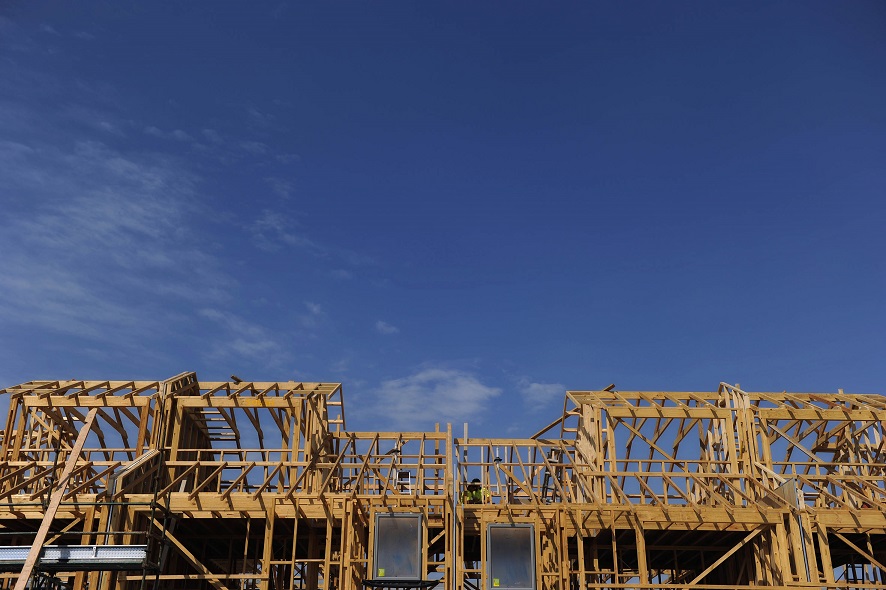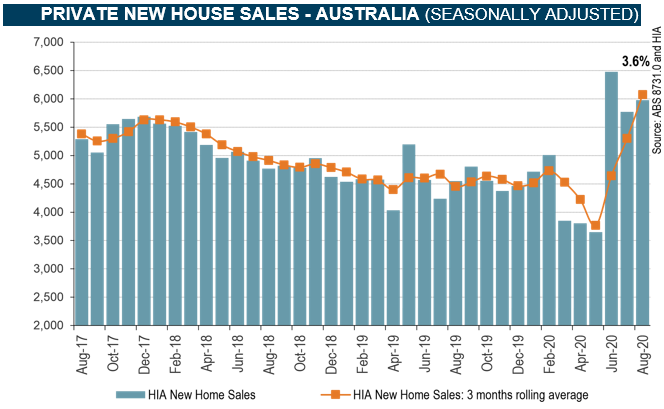
New home sales data confirms that HomeBuilder will support building activity and protect jobs in the December 2020 quarter, according to the Housing Industry Association (HIA).
The HIA new home sales report, a monthly survey of the largest volume home builders in the five largest states, is a leading indicator of future trends in the residential building industry.
It was released last week.
“The improvement in the number of new home sales over the most recent three months will see a lift in the number of homes under construction in the December quarter, compared to what would have been the case without HomeBuilder,” says Tim Reardon, HIA chief economist.
“New home sales in the three months to August are 61.3 per cent higher than the previous quarter, when confidence in the market was depleted and new home sales reached the lowest level on record.
“Without intervention, a significant contraction of work on the ground would have occurred in the second half of 2020 which meant up to half a million jobs were at risk.
“On balance this leaves the six months to August 8.7 per cent higher than the same time last year,’’ he said.
The strength of new home sales has not been consistent across all states.
Western Australia has seen an exceptional bounce in sales, up by 91.1 per cent over the past six months compared to a year earlier. This is due to combination of state and Australian Government programs and pent-up demand for housing.
Queensland has also seen an increase in sales over this period.
New home sales were static or lower for the past six months in Victoria, NSW and South Australia as the pickup in sales due to HomeBuilder have not offset the losses due to the Covid recession.
A sharp contraction in sales in Victoria for the month of August is due to the stage 4 restrictions and the closure of display centres.
“If the momentum from HomeBuilder is maintained, more slabs will be poured before the end of the year which will create significant employment opportunities across the economy and not just in the home building sector,” Mr Reardon said.
Across the country, Queensland increased by 19.1 per cent in August compared to July 2020, followed by NSW and Western Australia which increased by 11.7 per cent and 11.4 per cent respectively. South Australia increased by 7.4 per cent while Victoria declined by 14.4 per cent.
Over the six months to August, sales have increased in Western Australia by 91.1 per cent and Queensland by 4.2 per cent compared to the same time last year.
NSW (-0.1 per cent), South Australia (-8.6 per cent) and Victoria (-12.0 per cent) recorded declines during this period.

